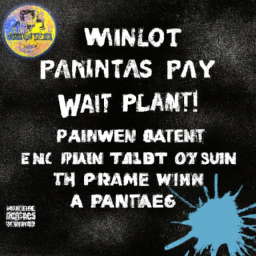When Was Paintball Invented A History
When Was Paintball Invented
A Brief History of Paintball: Examining When It Was Invented
Paintball is an increasingly popular sport among the young and old alike. People enjoy the thrill of participating in strategy-based team gameplay and also relish having an excuse to dress up in paint splattered camo gear to look the part. But have you ever stopped to consider when this exciting game came into existence?
When Was Paintball Invented?
Today, paintball is officially recognized as an international sport. But when was it invented? Well, officially the game of paintball was invented in the 1980s; however, its origins stretch considerably back. To understand paintball's inception, it's important to look at the various ways it has evolved since its beginning.
Origin of the Term Paintball
The term paintball was popularized in the mid-1980s as the game gained widespread popularity among recreational players. However, the term first arose in 1971, when Charles Gaines filed for a patent referred to as tactical training games/ simulations, as reported by the History of Paintball podcast.
The Milsim Era
Moving forwards, the next evolution of paintball came to be known as Milsim, or Military Simulation. This form of paintball, also referred to as woodsball by some, involved a more comprehensive system of gameplay, in the sense it required players to participate in more intricate tactical scenarios. This form of paintball escalated the game to a more serious level, as teams were striving to be as realistic as possible within their designated scenarios.
The Tournament Era
With increasing popularity of the game among amateur and professional players, the next era of paintball involved focused on the development of a tournament style. This form of paintball was included in the National X-Ball League, whose intention was to provide paintball athletes the opportunity to compete at a professional level. To achieve this, the league included a point system and more comprehensive rules and regulations for live tournament play.
Speedball and Its Impact
The next stage in paintball's development saw the entrance of speedball, which was popularized in the 1990s. This form of paintball was most similar to its current state and involved less interaction with elements such as natural landscapes. Scenes were more open-field, linear based and encouraged a quicker tempo of play. As a result, speedball left its mark on the development of paintball as teams could indulge in the full experience of competitive play within a competitive environment.
The SuperGame Era
The next era of paintball included the SuperGame era, which was pioneered by a group of woodsballers in California during the early 1980s. This form of paintball involved a hybrid style of both woodsball and speedball, incorporating features of both game styles together. Consequently, it provided players with extended playtime, as well as the opportunity to explore more intriguing man-made and natural obstacles for added refinements within their gaming strategies.
The Current Era of Paintball
Finally, paintball has evolved to what it is today, combining all of the above elements together to create a game that is both strategic and enjoyable. Today, paintball is a widely recognized recreational sport with a strong presence among recreational and professional players alike.
In Summary
Paintball has an impressive history extending back many years; way prior to its official invention in the 1980s. Its inception was marked by a patent claimed by Charles Gaines for a tactical training game/simulation in 1971. From Milsim to the tournament era of the National X-Ball League, and from speedball to the SuperGame era, paintball has evolved likewise. All of these elements have contributed to the development of the game as it is now known - a recreational sport with a strong presence among both recreational and professional players.

Previous Page
Next Page
